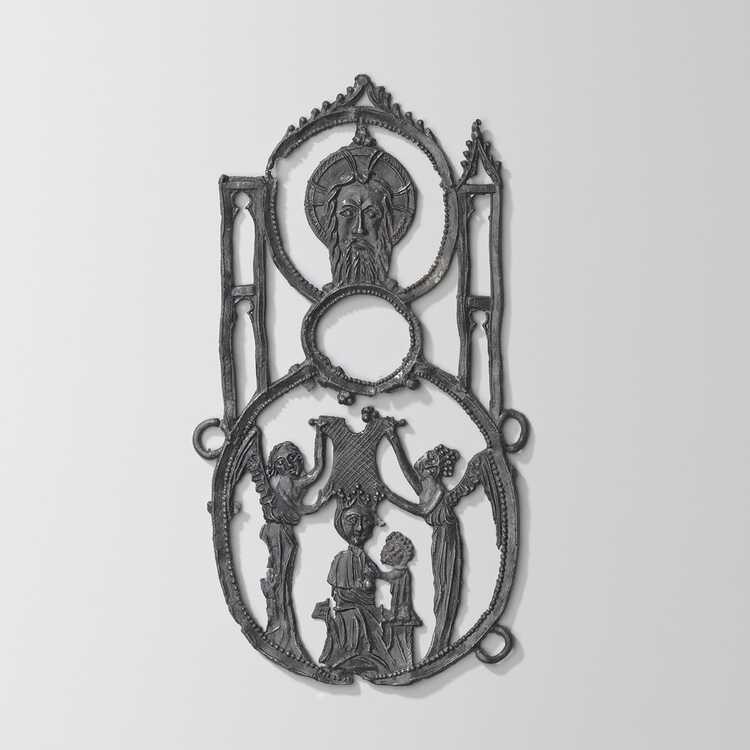In an act of deep piety, Charlemagne accumulates a selection of exceptional Christian relics and assembles these at the chapel of his palace in Aachen (Aix-la-Chapelle): the Virgin Mary’s maternity robe, Christ’s loincloth, the towel in which John the Baptist’s severed head was wrapped, and Joseph’s stockings which were the swaddling clothes of the infant Christ. In 809, the sacred relics are displayed to the waiting crowd in the presence of Charlemagne himself. It is a tremendous success and is repeated in an annual ritual. After Charlemagne’s death and the division of his empire, the relics disappear and reemerge only later in the Middle Ages. In 1165, Charlemagne is canonised and his remains are transferred to an exquisite Karlschrein and placed in the chapel. In 1238, the four sacred relics are placed beside the emperor’s shrine in a separate Marienschrein. When a miraculous figure of the Virgin Mary is added, the chapel proves too small to accommodate the growing numbers of pilgrims struggling for a glimpse of the sacred objects. On feast days it is not just the well-being of those who have come to see the relics that causes concern, the clerics themselves fear for their safety, not to mention the safety of the chapel’s priceless treasures. The situation is out of control and an answer must be found. Henceforth the relics are presented from the dwarf gallery, high above the crowds in the courtyard. Now more people can see the relics. However, the pilgrims have a problem. They cannot touch the relics and transfer the holiness of the sacred objects to something they can take home.
An ingenious solution is found in Aachen in the first half of the fifteenth century: mirrors. In fact the idea stems from a heathen custom - the amulets which are sold to pilgrims as souvenirs are equipped with mirrors with which to view the relics and which thereby absorb some of their sacred power. Back home, the mirrors are used to shine on a piece of bread, for example, releasing some of that power and transferring its holiness. The sacred bread can then be administered to the sick and needy. Other pilgrim sites copy the mirror idea, especially the more popular places where relics are shown rather than allowed to be touched.
This mirror badge found in the riverbed of the Amstel was brought to the city by a pilgrim. It shows the Virgin Mary’s robe - the tunica - and the miraculous statue of Mary. The mirror which it once held is lost and the coloured plates on the back, intended to brighten the badge, are faded. Yet what remains is still a rare example of its kind, truly worthy of presentation and indeed one of the museum’s prize exhibits. And the poor pelgrim? If only he knew!

